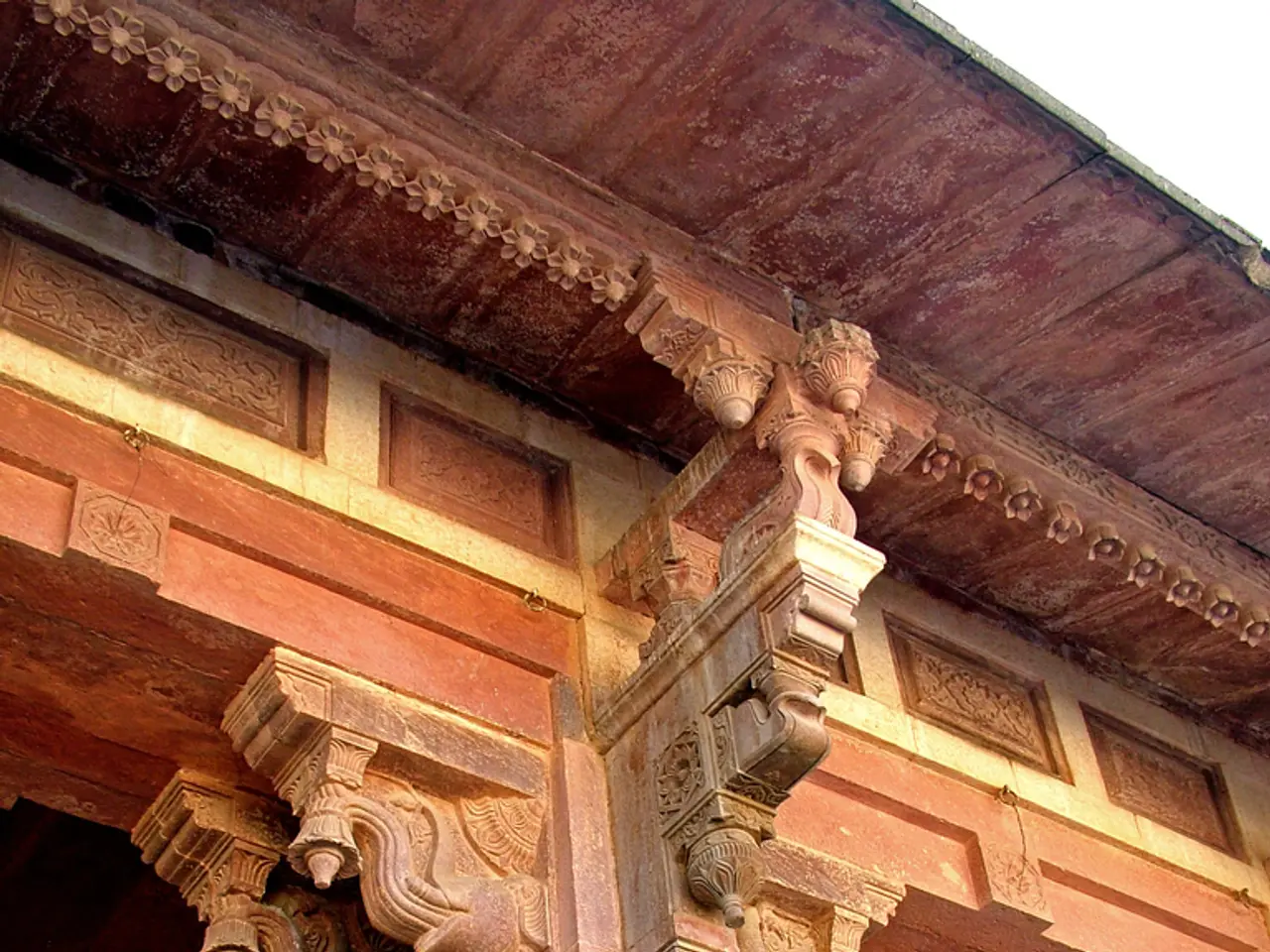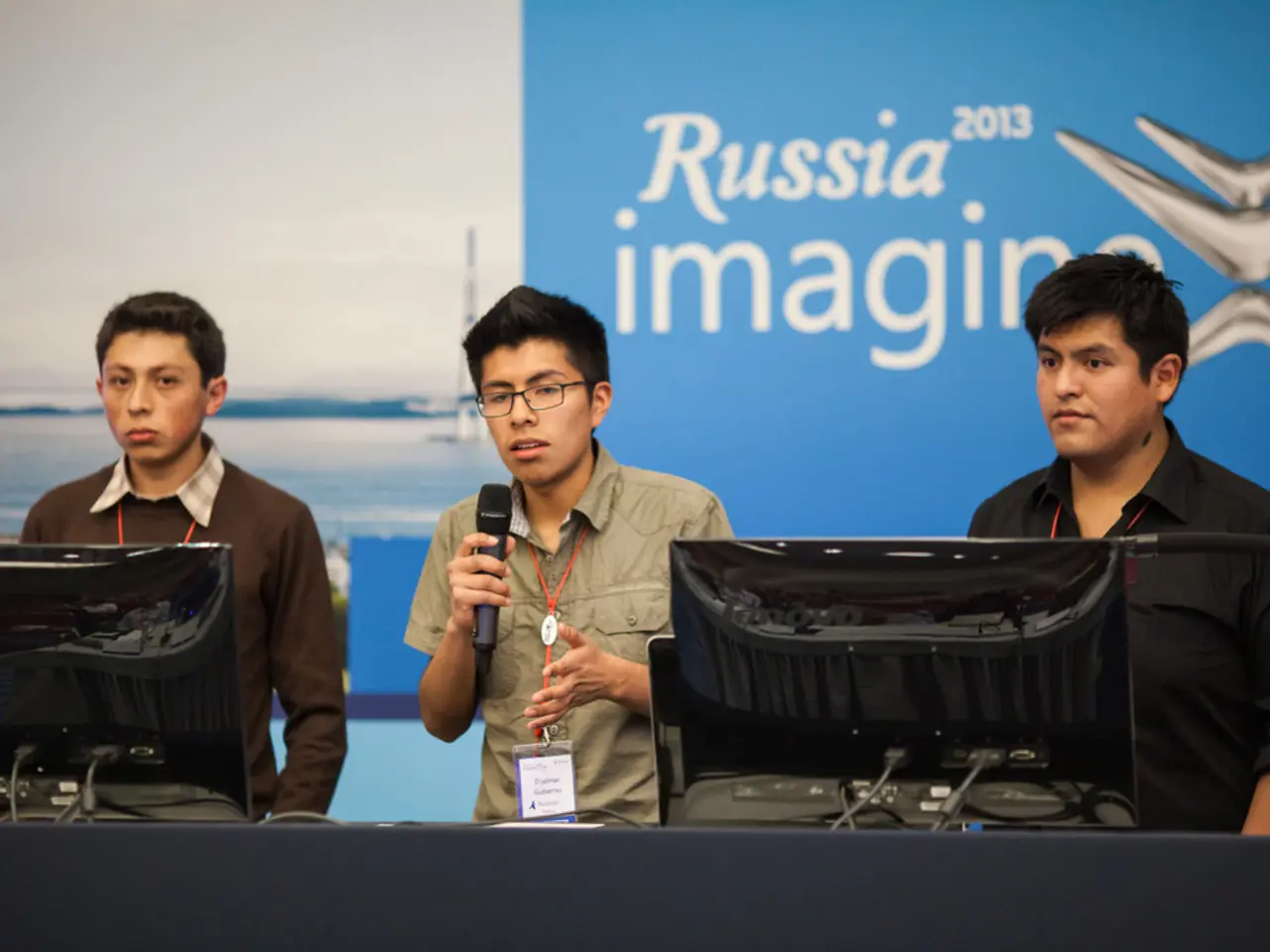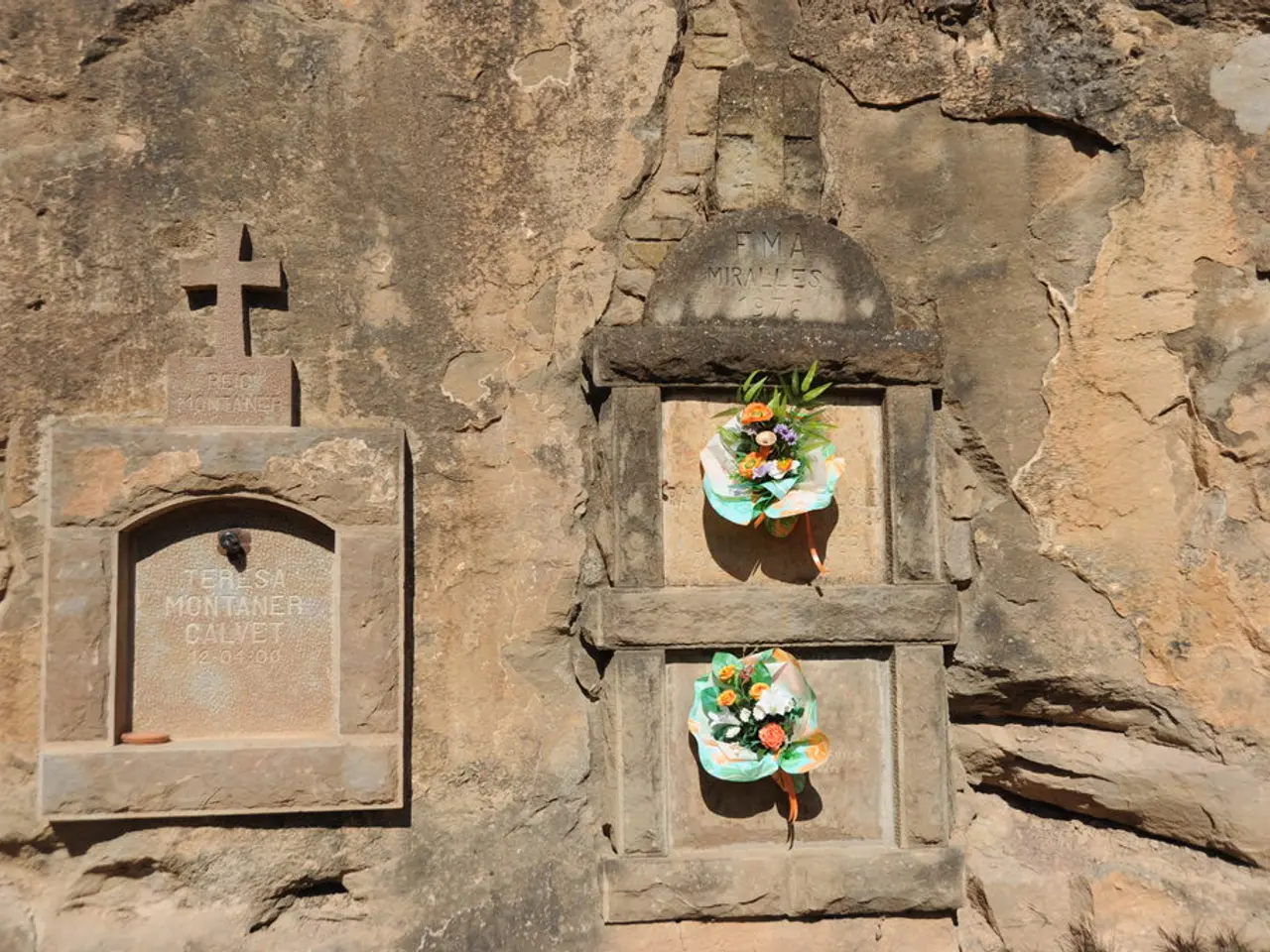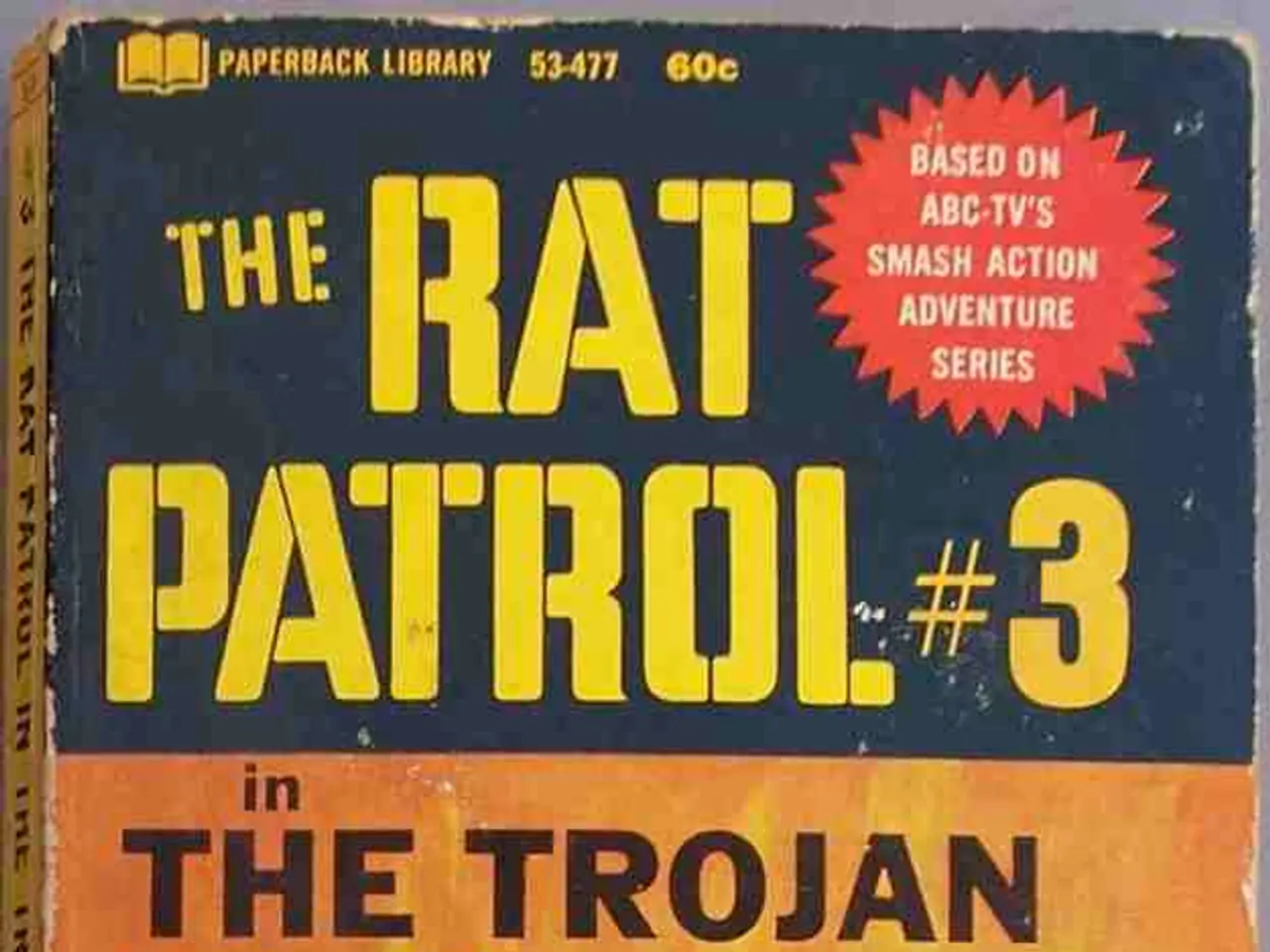Confirmation: Did Cambodia transform its border temple into a military headquarters?
In the heart of the Emerald Triangle border region, a long-standing dispute between Thailand and Cambodia over ancient temple sites continues to escalate, with both countries using these culturally significant landmarks as military bases.
The root of the conflict can be traced back to colonial-era boundaries and ambiguous maps. The Franco-Siamese treaties of 1904-1907 defined borders between Siam (now Thailand) and French Indochina (now Cambodia, Laos, and Vietnam), but French-drawn maps placed the Preah Vihear temple clearly in Cambodia. Thailand contended this was a map error, claiming the temple belonged to Thai territory based on treaty texts and watershed geography.
In 1962, Cambodia brought the Preah Vihear dispute to the International Court of Justice (ICJ), which ruled the temple was on Cambodian soil. However, the ruling did not clearly demarcate surrounding lands, leaving nearby areas contested.
The conflict intensified in 2008 when Cambodia secured Preah Vihear's designation as a UNESCO World Heritage Site, initially supported by Thailand’s government but later opposed by Thai nationalists. This fueled nationalist fervor, prompting troop deployments by both sides near the temple and adjacent sites such as Ta Moan Thom (Prasat Ta Krabay/Prasat Ta Khwai), leading to border clashes especially in 2011 and onward.
The symbolic significance of these sites for national identity and heritage is a reason for stationing troops there, effectively transforming cultural landmarks into militarized frontiers and flashpoints for conflict. By 2025, clashes involved artillery, multiple-launch rocket systems, tanks, air force jets, and resulted in significant casualties and civilian evacuations. Fighting broke out notably in 2011 and again in 2025 near Preah Vihear and Ta Moan Thom, which are ancient Khmer Hindu temple sites located on or very near the contentious border.
In July 2025, serious fighting erupted around Ta Moan Thom, with both sides accusing each other of initiating hostilities. Cambodia claimed its forces acted in self-defense after Thai incursions; Thailand asserted Cambodian attacks were unprovoked. This resulted in casualties over 30 people and displacement of over 200,000 on both sides.
The 1,000-year-old Hindu temple Preah Vihear/Phra Viharn is one of the contested temple sites. The ancient temple Ta Muan Thom is at the center of the current unrest in the Thai-Cambodian border dispute.
According to Professor Pavin Chachavalpongpun, co-author of Preah Vihear: A Guide to the Thai Cambodian Conflict and Its Solutions, using these cultural sites as military positions provides shelter and a strategic advantage for the occupying forces. Recent fighting in the region has resulted in over 30 deaths and displaced more than 200,000 people. Despite the ceasefire in effect since July 28, there have been reports of ceasefire violations.
The 1972 UNESCO World Heritage convention aims to protect natural and cultural heritage of "outstanding universal value," and the transformation of such sites into militarized zones clearly contravenes this. Although Prasat Ta Krabay/Prasat Ta Khwai is not yet a UNESCO World Heritage Site, international humanitarian law protects cultural property and prohibits its use for military purposes. By using a temple as a military base, a country risks losing its protected status, as it is a direct violation of the principles under which a UNESCO World Heritage Site was listed.
[1] Chachavalpongpun, P. (2015). Preah Vihear: A Guide to the Thai-Cambodian Conflict and Its Solutions. Routledge. [2] Suthikorn, W. (2011). The Preah Vihear Temple Conflict: A Case Study of the Role of Nationalism in International Relations. Journal of the Nationalism Studies, 12(2), 185-203. [3] Than, C. (2011). The Preah Vihear Temple Dispute: A Historical Overview. Journal of the Siam Society, 101(1), 1-38. [4] Than, C. (2015). The Preah Vihear Temple Dispute: A Historical Overview. In A. D. K. Haw, & P. M. K. Y. Yap (Eds.), The Southeast Asian Legal Landscape: An Introduction (pp. 221-238). Routledge. [5] Than, C. (2014). The Preah Vihear Temple Dispute: A Historical Overview. In A. K. S. K. Y. Yap (Ed.), The Southeast Asian Legal Landscape: An Introduction (pp. 221-238). Routledge.
- The long-standing dispute between Thailand and Cambodia over ancient temple sites, such as Preah Vihear and Ta Moan Thom, escalated due to their use as military bases, with both countries placing troops at sites of cultural significance and heritage.
- The use of these historical landmarks as militarized frontiers has sparked a series of conflicts, leading to notable clashes in 2011 and 2025, resulting in significant casualties and the displacement of hundreds of thousands of people.
- Professor Pavin Chachavalpongpun suggests that using cultural sites as military positions provides shelter and a strategic advantage for the occupying forces, violating the principles of the 1972 UNESCO World Heritage convention that aims to protect such landmarks of "outstanding universal value."
- International humanitarian law also protects cultural property and prohibits its use for military purposes, yet both Thailand and Cambodia have utilized ancient temples like Preah Vihear and Ta Muan Thom in their military operations, putting their potential UNESCO World Heritage Site status at risk.
- The ongoing conflict and the militarization of these cultural sites have been extensively studied by scholars such as Witthaya Suthikorn, Ch隊nathip Than, and Pavin Chachavalpongpun, providing valuable insights into the role of nationalism in international relations and the complexities of the Thai-Cambodian border disputes.








